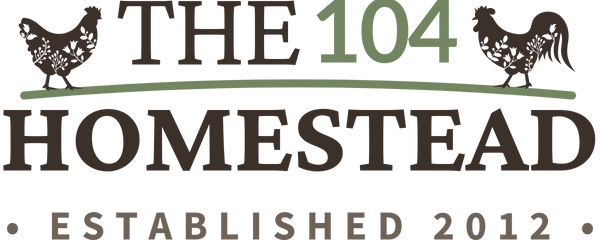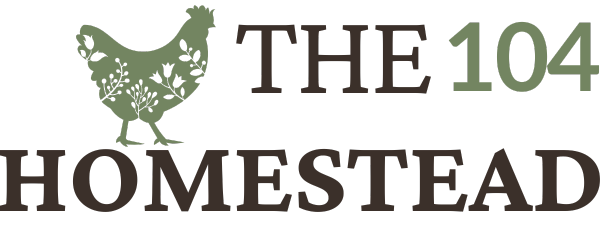Homemade Quail Feed: Balanced Recipes for Coturnix Quail
Make homemade Coturnix quail feed to keep your covey healthy and productive. Perfect for people who raise quail for meat and eggs.
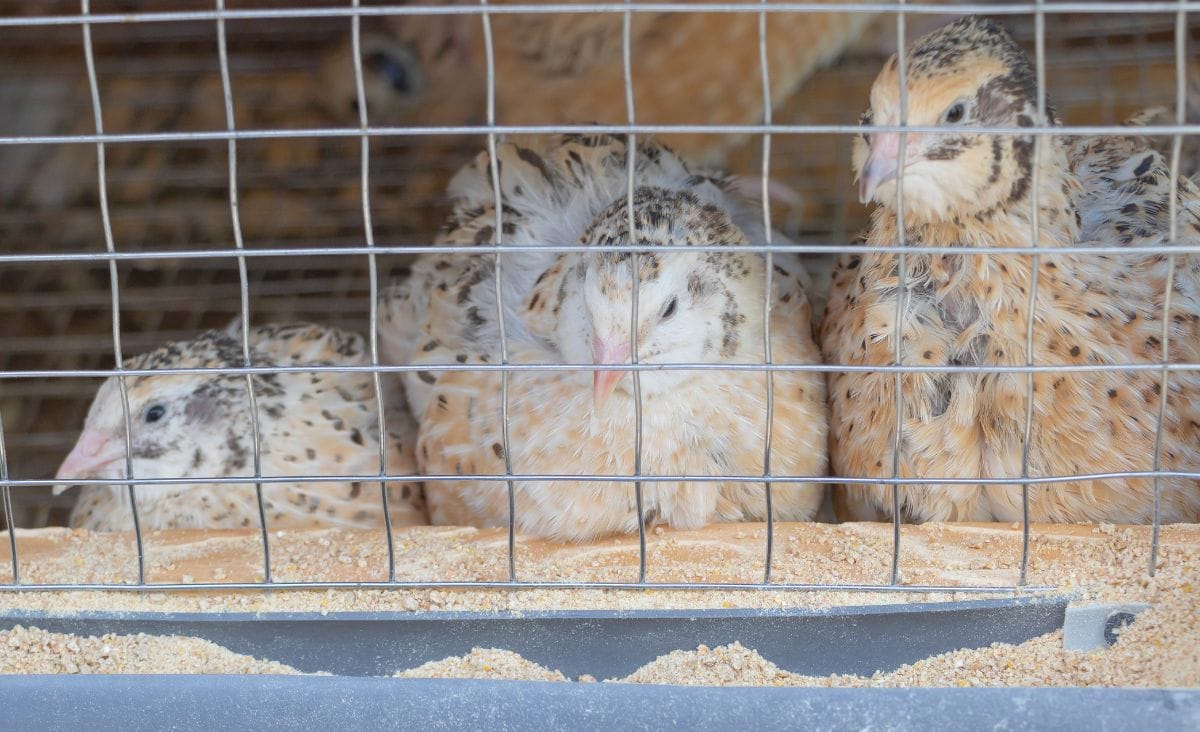
Raising Coturnix quail for eggs and meat is one of the most rewarding ways to produce protein at home. These birds grow quickly, thrive in small spaces, and lay nearly every day if their diet is right. But commercial feed isn’t your only option—making homemade quail feed can save you money, let you control the ingredients, and better meet the specific needs of your covey.
In this post, I’ll walk you through how I make my own feed, including two tried-and-true recipes that have worked well here on the homestead.
Not sure if quail are the right fit for your homestead? Learn more about why quail farming might be worth considering—especially if you’re tight on space or looking for fast protein production.
Why Choose Homemade Feed?
Some folks choose to mix their own quail feed out of necessity—others do it to improve health, cut costs, or boost productivity. Whatever your reason, here’s what homemade feed can offer:
Tailored Nutrition
Homemade feed allows you to match the nutritional content to your covey’s stage of life. Chicks need high protein. Layers need extra calcium. Meat birds benefit from energy-rich ingredients. You’re not stuck with a one-size-fits-all blend.
Ingredient Control
You know exactly what goes into the mix. No fillers, preservatives, or low-quality ingredients. You can source your own grains, seeds, and meals—or grow some of them yourself.
Cost-Effectiveness
Buying in bulk and mixing your own can be significantly cheaper long-term, especially if you’re raising a large number of birds. The time investment pays off in quality and savings.
Looking for other ways to cut costs while raising healthy quail? Here are some DIY and money-saving tips for raising Coturnix quail. Wondering how many birds to raise? This guide can help you figure out how many quail to start with based on your goals and space.
Nutritional Needs of Coturnix Quail
Homemade feed works best when it meets the birds’ real dietary needs. Here’s what to pay attention to:
Protein
Quail need protein to grow, reproduce, and stay healthy. Chicks require higher levels (20–24%), while adult layers do well on 18–22%. Non-laying adults can maintain on 16–18%. If you’re feeding a mixed-age covey, you’ll want to check out my guide on what to feed Coturnix quail chicks vs. adults.
What I use: Soybean meal and fish meal are my go-to protein sources. They’re both high-quality and easy to measure into recipes.
Calcium and Minerals
Laying hens need plenty of calcium to produce strong shells. I use oyster shell or limestone in both my recipes to meet that need. Balanced minerals also support bone strength and prevent egg issues.
Vitamins
Vitamins A, D, and E are key for egg production, immune health, and bone strength. I use alfalfa meal and kelp powder to boost natural vitamin content.
Energy
Quail need carbs and a little fat to keep going—especially in cold weather. Whole grains like corn, barley, and wheat provide both.
Variety and Enrichment
Sometimes I mix in a small amount of produce, mealworms, or herbs to keep things interesting. Quail benefit from enrichment just like any other animal.
For a deeper look at what quail can (and shouldn’t) eat, check out The Ultimate Coturnix Quail Feeding Guide over on Forget-Me-Not Quail Farm.
Tip: Introduce any new feed slowly over 3–5 days. This gives their digestive systems time to adjust and helps prevent problems.
Two Balanced Homemade Feed Mixes
Each of these mixes is designed with a specific purpose. Use them as a starting point and adjust as needed for your birds.
Growth and Maintenance Mix
This is my everyday, all-purpose mix for quail that aren’t laying or breeding. It’s balanced for steady growth, feather health, and maintenance.
Includes: Corn, soybean meal, wheat, fish meal, oyster shell, salt
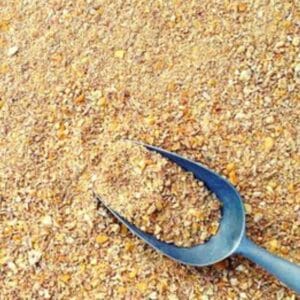
Basic Growth and Maintenance Mix for Quail
This post may contain paid links. If you make a purchase using the links in this recipe, I may earn a commission.
Equipment
- 1 Airtight Container
- 1 Grinder
Ingredients
- 8 lbs. Whole Corn
- 8 lbs. Soybean Meal
- 4 lbs. Wheat
- 2 lbs. Fish Meal
- 2 lbs. Oyster Shell or limestone
- ½ lb. Salt
Instructions
- Grind the whole corn and wheat using a grain mill or a high-powered blender so it’s small enough for the quail to handle.8 lbs. Whole Corn, 4 lbs. Wheat
- Mix all the ingredients thoroughly in a large container.8 lbs. Soybean Meal, 2 lbs. Fish Meal, 2 lbs. Oyster Shell, ½ lb. Salt
Notes
Laying Boost Mix
Designed for active layers, this blend supports daily egg production, stronger shells, and better nutrient reserves.
Includes: Soybean meal, barley, peas, alfalfa meal, fish meal, sesame seeds, oyster shell, kelp, salt
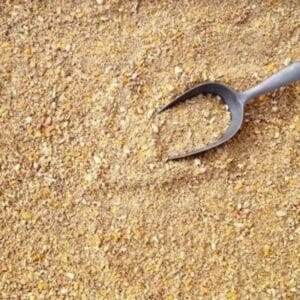
Laying Boost Mix for Quail
This post may contain paid links. If you make a purchase using the links in this recipe, I may earn a commission.
Equipment
- 1 Airtight Container
- 1 Grinder
Ingredients
- 8 lbs. Soybean Meal
- 8 lbs. Barley
- 4 lbs. Peas
- 2 lbs. Fish Meal
- 2 lbs. Alfalfa Meal
- 2 lbs. Sesame Seeds
- 1 lb. Oyster Shell or limestone
- ½ lb. Kelp Powder
- ½ lb. Salt
Instructions
- If you can’t get it already ground, grind the barley and peas.8 lbs. Barley, 4 lbs. Peas
- Mix all the ingredients thoroughly in a large container. I use a pet food storage container.8 lbs. Soybean Meal, 2 lbs. Fish Meal, 2 lbs. Alfalfa Meal, 2 lbs. Sesame Seeds, 1 lb. Oyster Shell, ½ lb. Kelp Powder, ½ lb. Salt
Notes
Tips for Feeding Homemade Quail Diets
Here are a few things I’ve learned while feeding homemade diets to my coveys—these tips can help you avoid common mistakes and get better results from your mix.
- Always offer fresh, clean water.
- Keep feed in an airtight container in a cool, dry place.
- Watch your birds—if they’re dropping weight, laying soft-shelled eggs, or acting lethargic, the mix may need adjusting.
- Supplement with forage, mealworms, or garden extras to add variety and trace nutrients.
- Weigh your birds occasionally to monitor growth and health.
Heads up: Quail need constant access to food. They have fast metabolisms and shouldn’t be meal-fed like chickens.
If you’re still deciding on breed, here’s why I recommend Coturnix quail for nearly every homestead—they’re hardy, productive, and easy to raise.
Frequently Asked Questions About Homemade Quail Feed
If you’re thinking about making your own quail feed—or you’ve already started—you probably have a few questions. Here are some of the most common ones I hear, along with what’s worked for me.
Want to keep this handy? Save this post to Pinterest so you can come back to it anytime your feed bins are running low!

Making your own quail feed isn’t just about saving money. It’s about giving your birds the best care possible—and learning more about what they really need to thrive. Whether you’re mixing a basic blend for steady growth or dialing in a calcium-rich layer mix, homemade feed puts the control in your hands.
Have you tried making your own quail feed? Let me know what worked (or didn’t!) in the comments. We’re all learning together.
